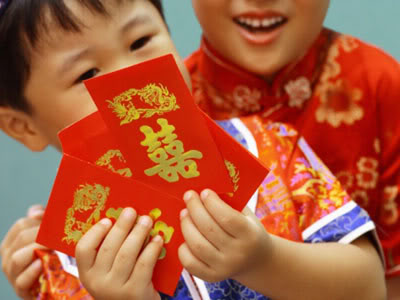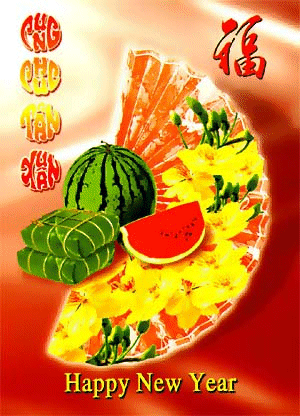The Lunar New Year festival, known as “Tết Nguyên Đán”, “Tết ta” or simply “Tết” in Vietnamese, is the most important as well as the most widely and heartily celebrated traditional festival in Vietnam. It is the time of joy and delight for children and adults alike and however the circumstances are, the Vietnamese can never neglect to properly keep their Tet.
Related: Lunar New Year in Vietnam

In the past, as the Lunar New Year fell in the leisure time between two major crops of the year, Vietnamese people considered it as a time for relax and entertainment to compensate for a whole hardworking year and prepare for the new (equally hard) one. Therefore, celebration often last all the first month of lunar calendar. Nowadays, the number of official days-off is four but festive moods hardly come off until at least ten days after the New Year’s Day have passed.
How Vietnamese celebrate Tet
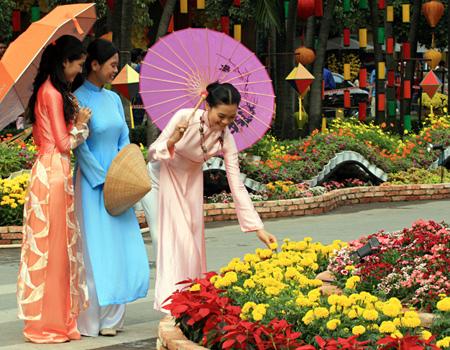
Like Christmas in the West, Lunar New Year is the time for family and indeed the only time of the year when the whole clan gather together. People always try to return to their hometown to meet with their parents, siblings and relatives no matter how far away they live and work. Being unable to “return home” in Tet is considered a great misfortune. As the result, all means of transportation (airplanes, trains, couches, etc) are crammed in this time of the year. It takes great effort to procure tickets but everyone find it rewarding nonetheless. Even those who have passed away are “invited” to return to enjoy Tet with the living.
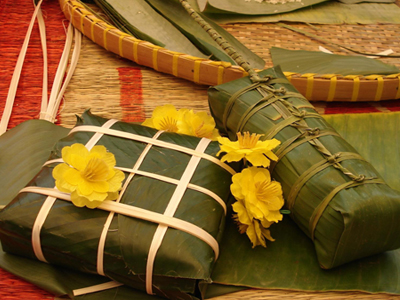
Tet is time of family so all family members contribute in the preparation for the event which consists mainly of cleaning up and cooking.
Food which is made especially for this occasion is overflowing in every household. Some dishes like “ bánh chưng” ( tightly packed sticky rice with meat and bean fillings wrapped in a kind of leaf like banana one) or “ dưa hành” (Pickled welsh onion) are strongly associated with Tet’s images and requires extensive preparations.
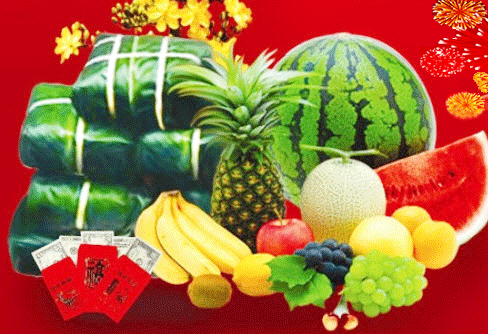
Flowers are indispensable as they are not only for decoration but also believed to bring luck and happiness to the household (from the fact that they are the signal that nature has become fertile again). In Northern Vietnam, peach blossom symbolizes Spring while in Southern Vietnam it is apricot blossom.
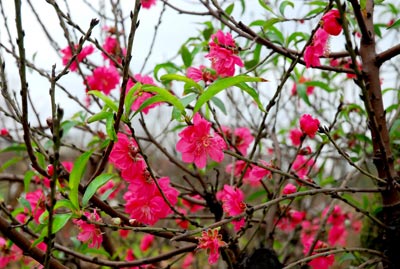
The way people celebrate Lunar New Year has changed a lot with time but most of the ancient customs related to the event are still observed. Some of them are avoiding conflict at least in the first three days of the year, tidying the resting place of the dead, paying homage to the ancestors and the gods, visiting each other. People also try to do their best in anything they do as they believe that bad luck will haunt if they start the year with failure. Vietnamese believe that if good things come to the family on the first day of the Lunar New Year, the entire following year will also be full of blessings. Besides that, they also help to keep everyone happy and everything harmonious in this special time of the year.
Guide for foreigners during Lunar New Year
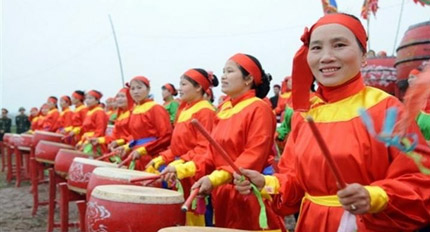
Tet is also a delightful time to visit the countryside as nearly every village organizes entertainment activities which differ from place to place. These activities take place after the village elders have performed ceremonies to express the gratitude toward the gods and to ask for peace and prosperity in the New Year. In several areas, the ceremonies and the games are also a way to honor the local or national historic heroes.
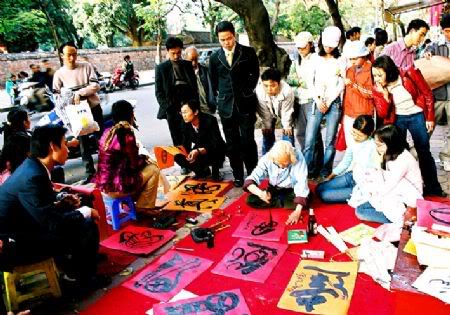
Vietnam has witnessed a lot of changes but the Lunar New Year festival will never cease to be the time of joy to the people.
